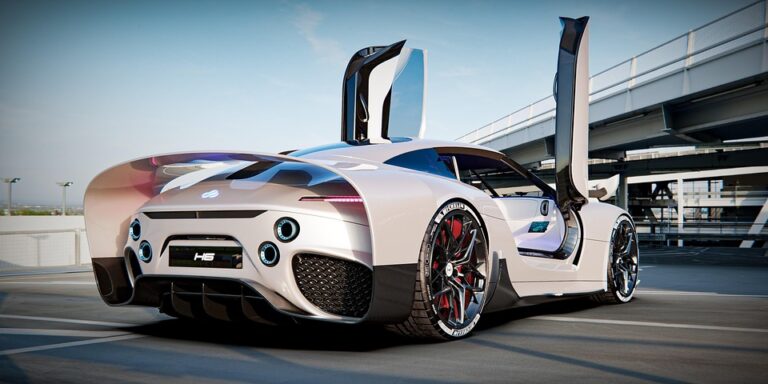The Impact of Augmented Reality on Automotive Design and Prototyping
The automotive industry is undergoing a significant transformation, and at the forefront of this revolution is augmented reality (AR). This innovative technology is reshaping how designers and engineers approach automotive design and prototyping, paving the way for new opportunities and efficiencies in the automotive sector. This article delves into the impact of augmented reality on automotive design and prototyping, exploring its applications, benefits, and future potential.
Understanding Augmented Reality in Automotive Design
Augmented reality is an interactive experience that combines real-world environments with digital information, enhancing user interaction and understanding. In the context of automotive design, AR allows designers and engineers to superimpose computer-generated images onto physical spaces, providing enhanced visualization of vehicle components, structures, and designs.
Applications of Augmented Reality in Automotive Design
-
Design Visualization: AR enables designers to visualize car models in real-time environments. By overlaying 3D models onto physical prototypes, they can examine proportions, aesthetic elements, and ergonomics in a more intuitive way.
-
Interactive Prototyping: Instead of relying solely on traditional physical prototypes, designers can use AR to create digital mock-ups that can be manipulated in virtual space. This technology speeds up the prototyping process, allowing for quick iterations and modifications based on feedback.
-
Collaboration and Communication: AR facilitates better communication among team members, regardless of their location. Engineers can collaborate on designs in real time by sharing AR visuals, ensuring that everyone is on the same page and can contribute their insights effectively.
- User-Centric Design: With AR, designers can simulate user experiences within the vehicle before it goes into production. By taking a user-centric approach, they can incorporate feedback directly from potential consumers, leading to more intuitive designs.
Enhancing Prototyping Processes with Augmented Reality
The prototyping phase of automotive design has always been crucial; errors made during this stage can lead to significant costs in terms of time and resources. Augmented reality enhances prototyping in several ways:
-
Reduced Time and Cost: Traditional prototyping can be expensive and time-consuming, requiring multiple physical models. AR allows for rapid changes and saves costs associated with materials and labor by reducing the need for physical prototypes.
-
Faster Turnaround Times: As designers can visualize adjustments in real-time, the time taken to finalize designs is significantly reduced. This efficiency allows manufacturers to bring new models to market more quickly, gaining a competitive edge.
- Improved Testing and Evaluation: AR can simulate various environmental conditions, allowing designers to assess how a vehicle might perform in different settings. This can lead to better safety and performance outcomes.
Real-World Examples of Augmented Reality in Automotive Design
Several automotive manufacturers are already harnessing the power of augmented reality in their design processes. Notable examples include:
-
BMW: The German automaker utilizes AR in its design studios to visualize cars before they are built. This allows for real-time adjustments and an enhanced understanding of design elements.
-
Ford: Ford employs AR for immersive design reviews, allowing teams to view and interact with detailed 3D models of vehicles in their actual surroundings, leading to faster decision-making.
- Audi: Audi’s AR applications facilitate collaboration among global teams, enabling designers and engineers to share and modify projects seamlessly, improving productivity and creativity.
Future Prospects of Augmented Reality in Automotive Design
As the technology continues to evolve, the future of augmented reality in automotive design and prototyping looks promising:
-
Integration with Virtual Reality: The combination of AR with virtual reality (VR) could offer even more powerful design tools, allowing for fully immersive design sessions that enhance creativity and problem-solving.
-
Artificial Intelligence: Integrating AI into AR systems may enable predictive modeling and automated design suggestions, optimizing the design process further and driving innovation.
- Consumer Involvement: As AR becomes more accessible, potential customers might have the opportunity to engage with automotive designs at an early stage, providing immediate feedback and influencing design directions.
Conclusion
The impact of augmented reality on automotive design and prototyping is profound and transformative. By improving design visualization, enhancing collaboration, and significantly streamlining the prototyping process, AR stands at the center of innovation in the automotive industry. As manufacturers continue to embrace this technology, we can expect a future where automotive design is not only faster and more efficient but also more aligned with consumer expectations and preferences.
For automotive enthusiasts to industry professionals, keeping an eye on the advancements in AR technology can provide insights into the future of automotive innovation. The era of augmented design is just beginning, promising exciting new developments for car manufacturers and consumers alike.
Interested in learning more about the latest trends in automotive design? Don’t forget to check out our other articles on Buzzo Live!


